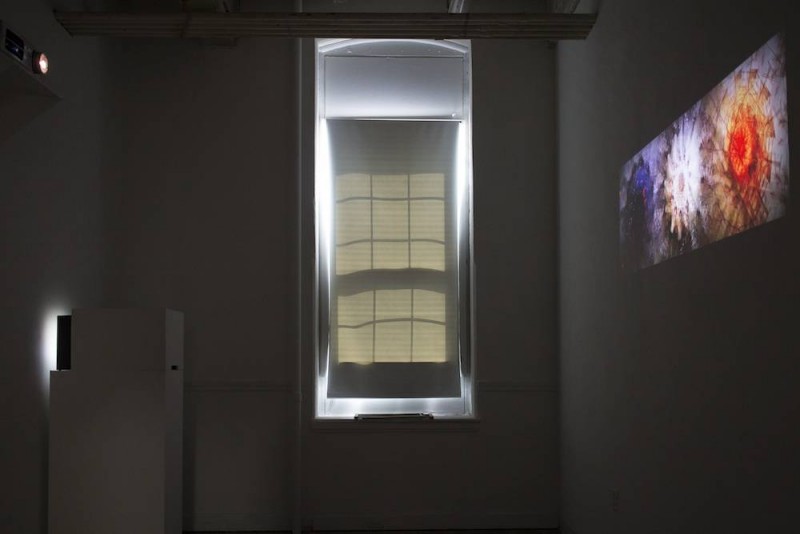
In this article, I would like to make some remarks about what I take to be a relatively general characteristic, an anatomical component if you will, of artist-run spaces in Philadelphia—the names given to these spaces by its members. It strikes me that it is the apposite time to offer an exposition and critical analysis of these spaces, as they have become an increasingly visible (due to their multiplication) and progressively central part of artistic production and display in this city.
I want to focus on the names of artist-run spaces for a simple reason—a name is often the first thing that is perceived by a viewer of an exhibition housed by the space. A name is also the organizing expression under which the activities of the space are formally unified. In a sense, then, a name occupies the initial point through which the art in a space is experienced. It is a point of mediation between the viewer and the art, in some cases prior to the experience of any artwork. For this reason, a name has an extremely interesting function in the process of the production of art events, exhibitions, and experiences.
Self-branding
Artist-run spaces are quite creative when it comes to naming their spaces. Recall a small handful (in alphabetical order) in Philadelphia: Fjord, Grizzly Grizzly, Little Berlin, Lord Ludd, Napoleon, New Boone, Pterodactyl, Tiger Strikes Asteroid, and Vox Populi. In light of these names, I think a naïve question needs to be posed: why do so many artist-run spaces organize their activities under the rubric of names that, on a formal level, have very little to do with artistic production? There are a number of answers that one could give. The one I would like to focus on is the most obvious. A name functions as a mechanism of self-branding that produces different identities within a context of a large array of other spaces.
It is important to underscore that the production of highly idiosyncratic names—exemplified in the above list—is not wholly a kind of auxiliary or purely fortuitous part of artistic production. They are, I would argue, an intrinsic part of the unconscious operations of producing art in a contemporary context. All the spaces are vying for attention (for visitor numbers) in an artistic environment that boasts of a great many artist-run space (it would be completely unsurprising if spaces kept a record of visitor numbers). To attract more visitors, a space needs to be perceived as distinct, even at a minimal level and regardless of how conscious this desire for perception is, from others. A name is a good way of creating such an immediately perceivable distinction. That is, a name is an effective way of stimulating a viewer’s desire to attend a space and to follow its activities.
Cultural competition
There is another side to this activation of the public’s interest. It is already contained in the above reflection as it concerns the way in which the production of an idiosyncratic name is part of a situation of cultural competition (the logical meaning of “vying”). Within the context of generalized competition, the name is simultaneously the symbol of the private self-determination of a space by its founding members, and the public expression of the realm of artistic competition that is not determined by the members but, rather, is a real condition in which art (and the rest of social life!) is currently formed. A useful way of making some sense of this twofold character of a name is to consider an paradigmatic context in Philadelphia—the 319 North 11th Street building.
It is unsurprising that this building offers us a vantage point for perceiving the hidden antagonistic relation between spaces in the state of competition (I would like to extend the comments I made regarding the Art Writing Competition here). The 319 building houses a number of non-art and artist-run initiatives. On the second floor, the space is divided into separate rooms. Most rooms are occupied by an artist-run space. The antagonism at work among the spaces and, crucially, against the conscious intentions of the members, is, first and foremost, initiated architecturally and mathematically—artist spaces are quite literally separated into isolatable units that can be counted, measured and separated. This separation of the space is useful from the purely economic standpoint of the ownership of the building—landlords can verify in a clear and efficient manner the status of occupancy in their buildings if spaces are divided into numerically defined parts.
Sites of art and action
When moving through the second floor, however, one does not have an immediate sense of the division of the space on geometric-mathematical grounds. Rather, the experience is more akin to the movement through galleries in a museum. The second floor assumes a certain museum character, thus producing an effect of narrative transition from space to space or, more precisely, gallery to gallery. When taken in this way, however, the second floor of the 319 building takes on a rather jarring form—the movement from space to space is a movement of disjunction between spaces since they aim to maintain a certain amount of autonomy from other spaces. Thus, the ‘narrative flow’ is broken as there is, strictly speaking, no narrative to define. In major museums, these narratives are formed very often on purely historical lines—one passes from one major European artistic ‘movement’ to the next as if history itself were a linear, unrippled continuum of events. No such history is sustained in the 319 building.
The organizing experience is perhaps more like that of a ‘hub’ or ‘cultural center.’ The activities in the second floor, and the third floor in which Vox Populi is found, produce the impression of a ‘beehive’ of artistic activity (this is felt on First Fridays, especially). When we move from gallery to gallery, then, what we experience is not the particularity of specific artworks but, rather, the feeling of artistic industry and vitality. One feels, on a purely spontaneous level, that the 319 building is alive with art. To participate in the artist-run spaces is to participate in the production of cultural productivity. As a result of this, art becomes almost purely auxiliary.
Names and identity
I believe that, at a certain level, a name registers and contains in abbreviated form this paradoxical self-effacement of art by way of producing a large amount of art events and exhibitions. The name becomes the catchword through which one attains access to the experience of the art-event that runs across all the spaces. It is the sign that expresses the full participation in the production of a lively artistic environment. This is, I believe, why they are so idiosyncratic and, more importantly, why the production of increasingly idiosyncratic names is the logic that runs through the process of naming a space.
The name becomes a way of branding a space and, thus, intervening into an artistic arena. The intervention, however, is one of seamless incorporation into a cultural politics of endless production and reproduction of art by way of mechanisms that are often not criticized within the spaces themselves.
The most striking point extracted with regard to the comments made above is, I think, the way in which the naming of artist-run spaces is mediated by the process of product branding—of differentiating products on an open, free-trading capitalist market—even though artworks never appear to be for sale. Self-branding becomes internalized at the level of how we exit and think about the things we do even if, at some level, nothing is for sale. Artist-run spaces become places of cultural production free of any clearly discernible product. They express a kind of abstract, pure productivity. That is, a sense that art is reducible to a process of ‘pure creative activity,’ a notion that finds its most ideological expression over the course of the last few decades.
A name is an interesting window through which to perceive this. It functions like the price tag attached to commodities. The price is the seemingly natural presentation of the value of a commodity as if the latter were the subject of its own value-production. In a similar sense, the production of increasingly idiosyncratic names of artist-run spaces operates as if it were a wholly naturalized part of artistic production. It is the sign of a space’s identity as different from other equally distinct identities and as if it were the subject of its own capacity to self-determine its difference. A name is never just something that one gives oneself by way of self-determination. It is also the mark of being ‘named’ by processes that one does not determine.
So, what’s in a name? Turns out quite a lot.









